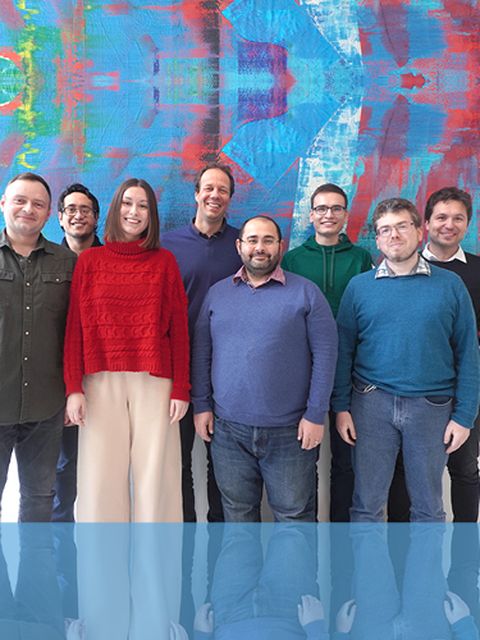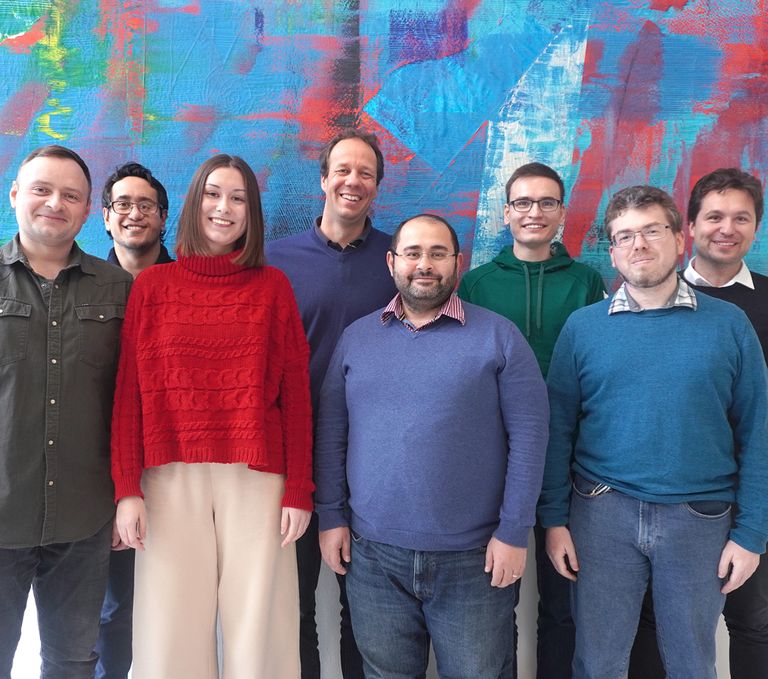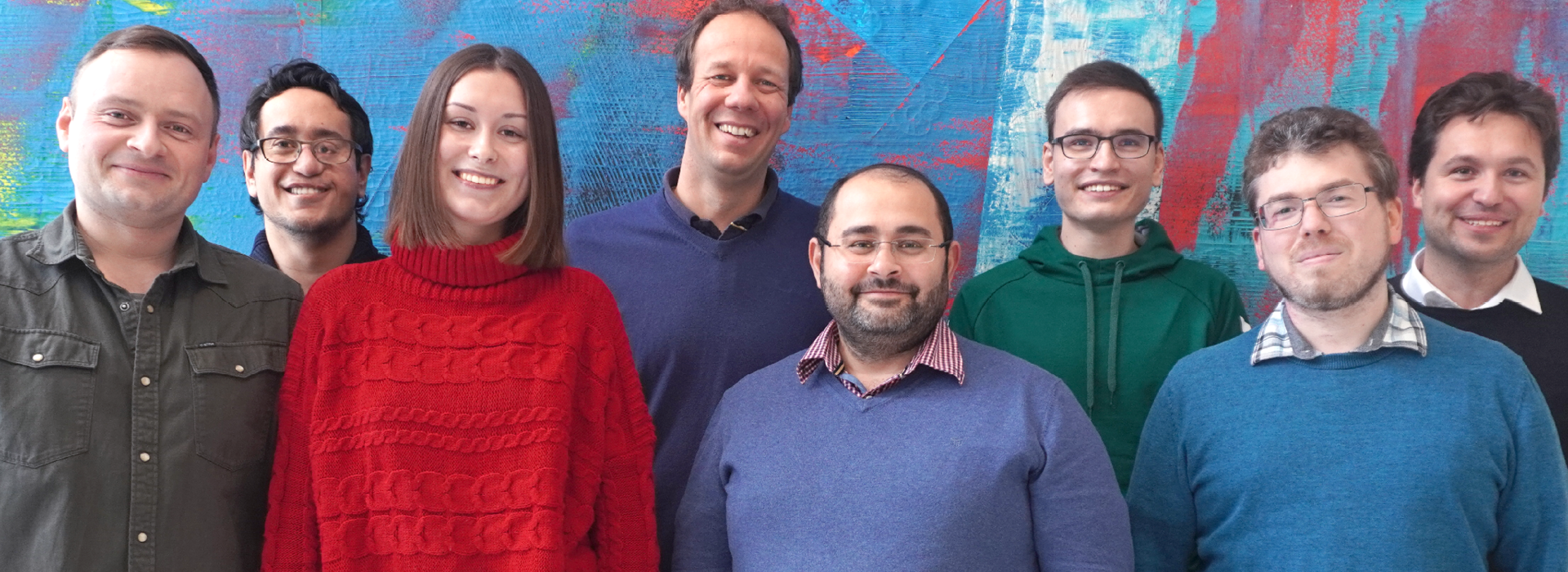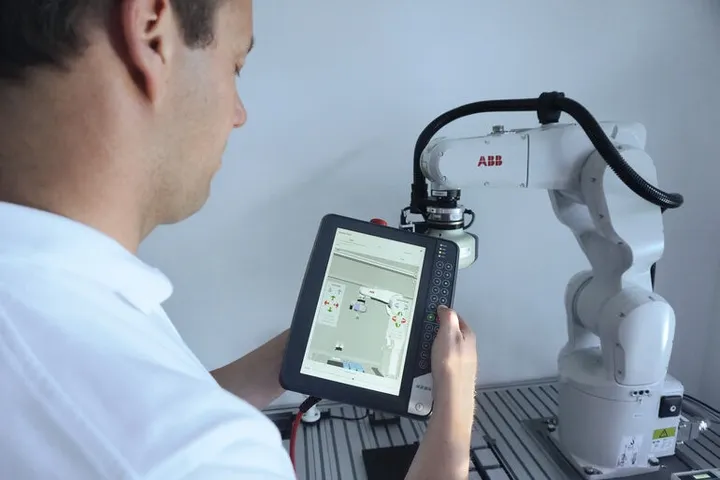The simple entry into flexible automation with a construction kit
Almost every manufacturing company has considered using robots to automate repetitive tasks. However, many - especially small companies - are hesitant to invest in automation because the flexibility and adaptability required when buying a turnkey solution is not available. Even for small changes to the robot, the supplier has to be involved every time, as the companies or their employees are not able to do this themselves.
To change this, drag and bot GmbH, a spin-off of the Fraunhofer Institute for Production and Automation (IPA), offers a flexible, easy-to-use and cost-effective automation kit, the drag&bot Robot Kit. The basis of the Robot-Kit is "drag&bot OS", a software solution for robotics, which supports manufacturing companies in all steps from planning, simulation, integration, programming to fast retrofitting. In addition - depending on the customer's wishes - cost-efficient robots, pre-integrated gripping systems, intelligent camera systems, standardized robot platforms and modular systems for parts provision and safety are also included. This means that even manufacturing companies without their own robotics expertise can use robots simply, flexibly and economically, even for medium quantities, and convert them themselves, e.g. in the case of many and/or changing variants of a product series.
Step #1: Simply plan robot solutions
The free cloud solution drag&bot SIMULATION, a drag&bot OS variant that can only be used for simulation, enables simple, iterative configuration and evaluation of automation ideas in a 3D environment as the basis for an investment decision.
In the first step, the application is modeled. For this purpose, drag&bot SIMULATION selects suitable robots, grippers, part provisioning solutions and other peripherals from the automation construction kit in a 3D environment and arranges them spatially. Additional elements, such as the machine tool to be loaded, further devices or individually designed cell solutions can be uploaded and inserted as a CAD model to represent the planned application as accurately as possible.
In the second step, the robot is brought to life. For this purpose, program sequences are created in the graphical no-code programming environment of drag&bot. The created sequences can be simulated and adjusted until the behavior of the robot meets the requirements. If it turns out that the arrangement of robot and machine tool, for example, is not optimal or that it would be better to use a larger robot, the arrangement can be adjusted at any time in the 3D environment.
The result of the planning is a specified robot solution tailored to the customer's application with correctly selected core components (robot, gripper, part provisioning solution, platform) arranged in a working layout. Based on this specification drag&bot quickly creates an orderable offer in cooperation with its partners. In combination with the estimation of the cycle time resulting from the created sequence program, the profitability or ROI of the robot application can be determined and a realization decision can be made quickly and well-founded.
Step #2: Simple implementation of the robot solution
Depending on the resources available in the company, there are two options for implementing the planned robot solution:
The company implements the robot solution itself on the basis of a pre-integrated drag&bot bundle that works from day one
The company procures a flexibly adaptable complete solution from a drag&bot partner
Do-It-Yourself automation with drag&bot
A drag&bot bundle consists of the components selected from the automation construction kit, drag&bot PRODUCTION - the variant of drag&bot OS for the realization of real robot solutions - and a training package. A bundle is always characterized by the fact that all components are integrated in drag&bot OS and thus ready for use and usable without further integration effort. The associated training package is adapted to the previous knowledge of the customer's employees, and enables the employees to realize the planned application themselves. This is made possible thanks to the graphical no-code programming environment integrated in drag&bot OS - the drag&bot BUILDER - as well as application-specific customizable program templates. For loading and unloading the machines, for example, there are program templates with functions for gripping from grids, for using single or double grippers, for NIO testing and for collision-free basic position travel. These program templates can be further customized in the drag&bot BUILDER. New function blocks can be inserted via drag-and-drop if required. Graphical wizards can be used, for example, to teach and adjust robot movements, configure grids or define I/O communication.
In this way, any personnel with a basic technical understanding, e.g. maintenance personnel, CNC specialists, line supervisors, are able to adapt and modify program templates to implement specific applications after about one day of training. If help is still needed, drag&bot offers additional support via partners, e.g. for
If help is still needed, drag&bot offers additional support via partners, e.g. for the implementation of the communication to a machine tool, for the programming of applications that cannot be mapped via program templates or for the preparation and execution of the CE acceptance.
Alternative: flexibly adaptable complete solution
Companies lacking the resources to implement a robot application themselves, e.g. because no suitable employees are available, can alternatively procure a complete solution based on drag&bot OS and thus flexibly adaptable to the results of the planning from a company in the drag&bot partner network. Again, after about one day of training, any staff with a basic technical understanding will be able to adapt and modify program templates to implement specific applications.
Step #3: Use robot solutions flexibly
Robot solutions implemented with drag&bot OS are easy to use and can be adapted to changing conditions by the manufacturing company itself. For this purpose drag&bot distinguishes two user levels: commissioner and operator. While commissioning users have all rights to create and modify applications with the drag&bot Builder as described above, the "OPERATOR COCKPIT" displayed on a touch panel is the central interaction element for operators to start and control the robot application, to monitor it and to intervene in case of errors. A large number of so-called widgets are available for this purpose
From which the commissioning engineer can configure application- and operator-specific OPERATOR COCKPITs.
Examples of widgets are:
3D visualization of the robot solution
Display of KPIs such as number of parts produced, number of NIO parts, ..
Functions stored via buttons, e.g. stop after next cycle, collision-free basic position run, eject part, open/close gripper, ..
Visualize and change I/O values
Display result of image processing e.g. localized objects in camera image
Display program sequence and current position in the sequence
Visualize and modify the occupancy state of a partial grid
In addition, operators can adapt robot applications to new requirements, such as changing part geometries or new part provisioning grids, using step-by-step instructions. The step-by-step instructions can be created by the commissioning engineer during the creation of the robot application from basic elements such as images and text in an application-specific way, so that the operator is given exactly the configuration options he needs, but other parameters, such as the limited maximum speed of the robot, cannot be accessed. Should further changes to the robot application be necessary, the commissioning engineer can easily make any adjustments to the program flow, robot movements, I/O communication, etc. via the graphical no-code programming interface described above in conjunction with various wizards, e.g. to integrate new processes.
Possible applications
The drag&bot Robot-Kit is especially designed for any application to insert and remove parts for machining, labeling, assembly or quality inspection in machines. These insertion tasks are still performed manually in many cases, although automation would be technically possible without any problems. The implementation usually fails due to the - due to high flexibility - lack of economic efficiency of classic automation solutions, which can only be adapted by experts.
This is where drag&bot comes in: the drag&bot Robot Kit in combination with drag&bot OS as a software solution for the simple planning, commissioning and use of robot solutions allows manufacturing companies an entry into flexible automation adapted to the resources and competencies available in the company: companies without previous experience are taken by the hand during planning and receive a solution that can be operated and thus flexibly used by their own employees. Companies with their own resources can implement solutions themselves on the basis of a bundle and thus save costs as well as quickly and cost-effectively implement any adaptations required later, both in programming and in the hardware itself. In both cases, economic automation is possible with high flexibility requirements.
















































